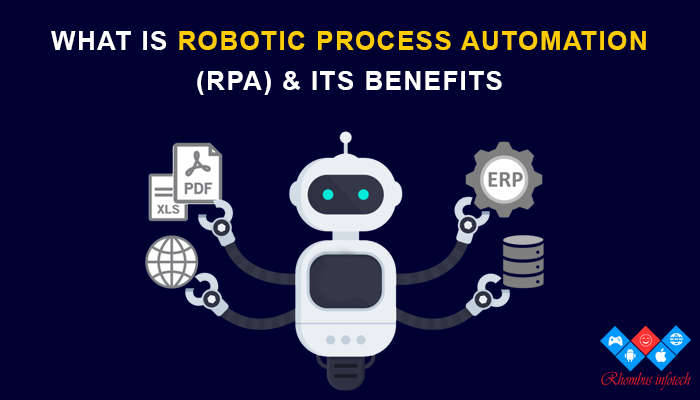A Robotics Process Automation (RPA) technology is a robotic which automates many of the tasks that humans regularly perform. The benefits of RPA are numerous and offer a wide array of competitive advantages. Businesses today begin to work aggressively to reach greater exposure of business process automation & offer cutting edge customer experiences. They want to leverage multiple automation technologies to achieve these seamless customer experiences and it is the most significant automation technologies that play a vital role in the overall solutions. RPA serves as the new technological improvement for companies by enhancing the business productivity and efficiency. Moreover, when combined with the conventional business solutions, it can stimulate the digital transformation by enabling enterprises to control end-to-end business activities. RPA’s benefits are attracting large investment. IT research firms estimate that the RPA market will grow from an estimated $1 billion in 2020 to a predicted $5 billion by 2024.
Key Benefits of RPA (Robotic Process Automation)
Here are some key benefits of RPA
Increase Productivity:
Most of the robots made from the RPA system are fully focused on specific tasks. Just consider an RPA bot that permits a worker to create a monthly report in 20 minutes, which manually endures four hours. The robots can calculate, click and navigate through the screen in a few seconds. This time saving is not adequate to replace the worker with the robot. However, it does make that worker more productive and that, in turn, will support future cost avoidance. With process automation, the business will enjoy a boost in its productivity.
Effective Use of Staff Resources:
This is the greatest benefit of robotic process automation for most companies: with your human staff freed from many tedious, low-value tasks, they can focus on higher value – and higher revenue generating tasks. Furthermore, as RPA oriented software robots are programmed more effectively, these bot can perform a still greater number of routine tasks, extending your human staff even more.
Helpful to Enhance Accuracy:
Since employees are human, there is a chance for mistakes. The main feature of robotic process automation is its power to eliminate processing errors. As it is not a turn-key solution, it requires testing, training as well as governance. However, as long as the business processes are properly optimized and accurately mapped, businesses need not be concerned that the robots will make errors that their employees might.
Helpful to Raise Security:
Among the benefits of robotic process automation, the most convincing one is that it functions on a granular level. As the bot performs only the single tasks, there is no worry of information leakage from one part to another. Here, the data accesses are well controlled and documented. The most ignored factor in RPA implementation is the myth that robots may replace the need for human employees. However, RPA implementation demands the employees who handle the system with the skills to control a workforce that includes both people and machines.
Helpful in Cost Reduction:
Certainly an RPA solution has upfront costs – buying the application, installing it – and then ongoing costs for maintenance. Additionally, upgrades to an RPA system can incur expense. But the reduced costs resulting from RPA is potentially huge because any given RPA robot is far less expensive than a human staffer. On a task-by-task basis, any chore performed by an RPA tool saves a business significantly – and this cost savings is multiplied as the software robot works ever longer at a lower cost.
Analytics Improvement:
There are numerous tracking systems for monitoring human staff – workflow analytics – but no human being can be tracked nearly as well as an automated robotic process. A clear grid of activities and timelines can be established, and an RPA tool’s effectiveness can be tracked down to the most minor task and the smallest time increment.
Improved Scalability:
RPA solutions are designed for ease of scalability. No human team of professionals can scale their scope and reach of competitive activities at the level of an army of automated bots. Indeed, the two teams, humans vs. bots, aren’t even close when it comes to scalability. A group of automated robotic processes, for instance, can be duplicated and programmed to accomplish a similar but slightly different set of procedures. The duplication and reprogramming can happen again and again, producing a legion of active systems where once there was a mere handful. Additionally, these RPA bots can increasingly incorporate artificial intelligence and machine learning into their automation, which offers yet another way to scale. In this case, AI and ML offer exponential scalability over human staff.
It is very important to adopt RPA technology for any business enterprise to have better insights into regarding what their primary business goals are. If the available business processes and IT infrastructure are effective, then the business can consider RPA automation as a user-friendly tool to meet their automation objectives. Even if the process, platforms, and applications are outdated, then the RPA can be used to solve the issues. Overall, at this age of the digital transformation, robotic process automation is highly required for companies to nurture the healthy working environment.

